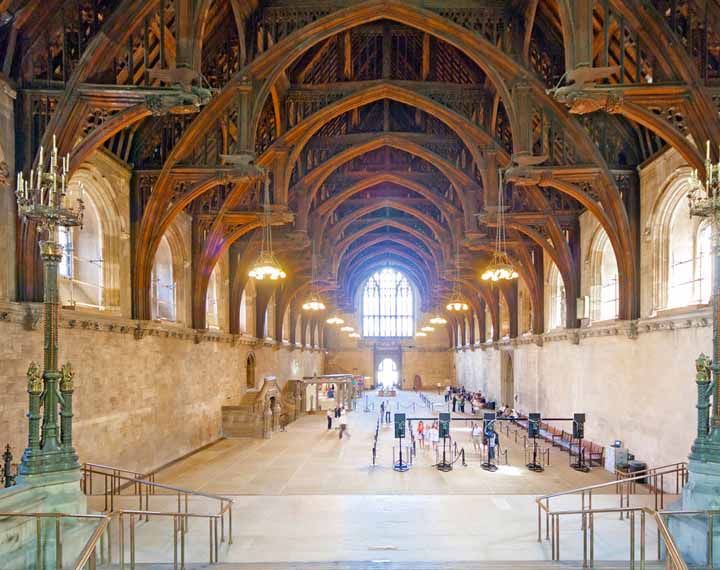Built to impress
The Hall was built in 1097 under William II (Rufus), the son of William the Conqueror, and was completed two years later. He had conceived the project to impress his new subjects with his power and the majesty of his authority.
According to one story, when the King first inspected the Hall, one of his attendants remarked that it was much larger than needed. The King replied that the Hall was not half large enough, and that it was a mere bedchamber when compared to what he had in mind.
Largest in Europe
But the Hall was indeed by far the largest hall in England, and probably in Europe at that time. Measuring 73 by 20 metres (240 by 67 feet), it had a floor area covering 1,547 square metres (about 17,000 square feet), with a length of almost four cricket pitches end-to-end.
Indeed, the Hall was so large that other halls were needed at Westminster for normal use, and the royal household usually ate in a smaller hall nearby.
The Hall’s early features
The great mystery about the Hall is the form of its original roof. Not until the 13th or 14th century could carpenters create roofs significantly wider than the length of the available timber, and so it was assumed that a single or double row of columns was needed to support the Hall’s roof.
However, recent archaeological explorations found no evidence of these, and that the roof may have been self-supporting from the beginning.
Stone walls
The Hall was enclosed with stone walls fully two metres, or six feet thick; these largely remain today, though heightened and refaced. Inside the Hall was an arcade with large arches and windows and a wall passage around all four sides. Above the windows was a chequer-work pattern of light and dark stones. The inside walls were plastered and painted, and decorative hangings were draped from the arcade.



